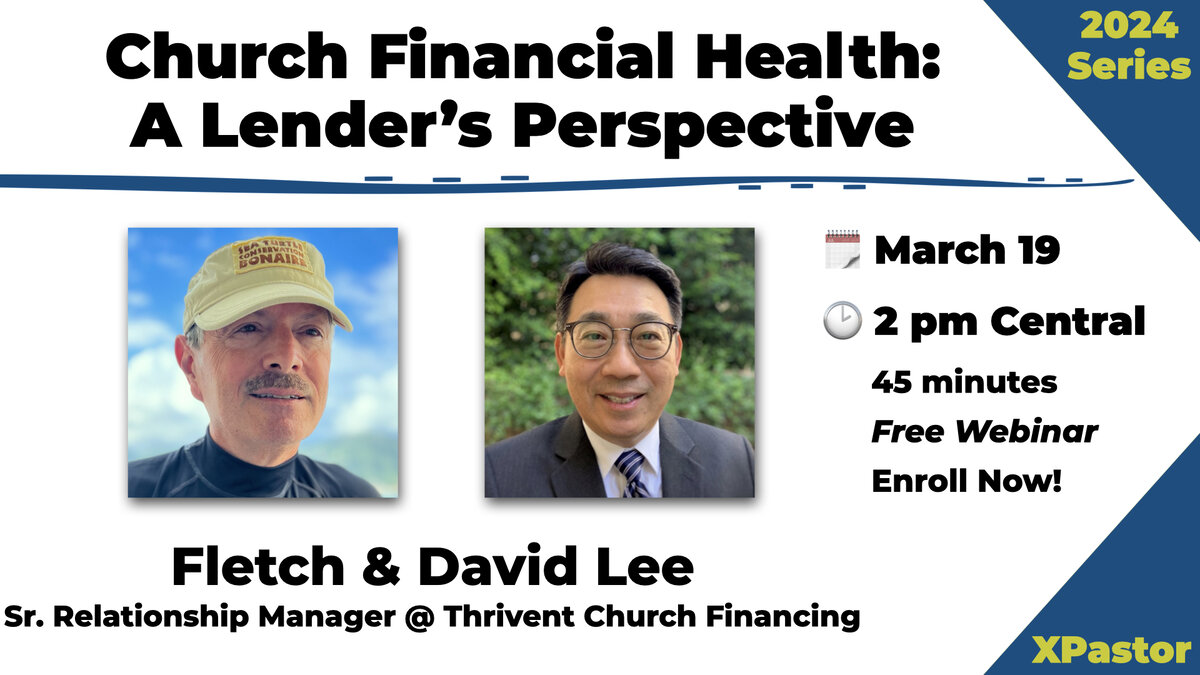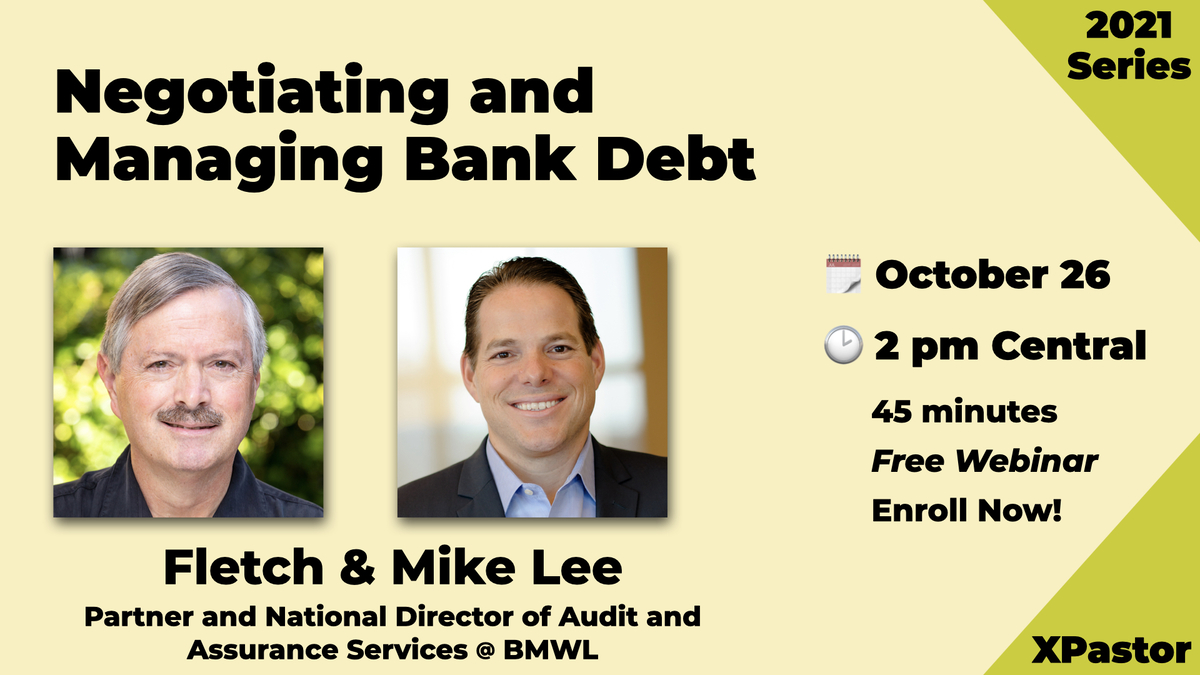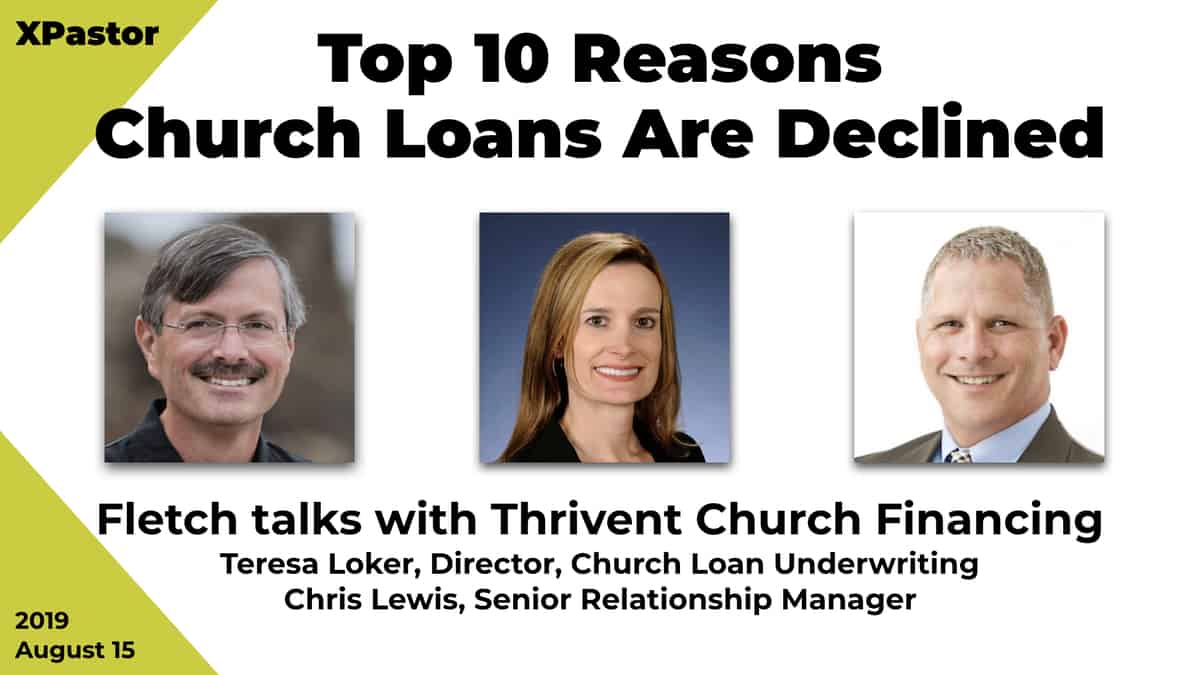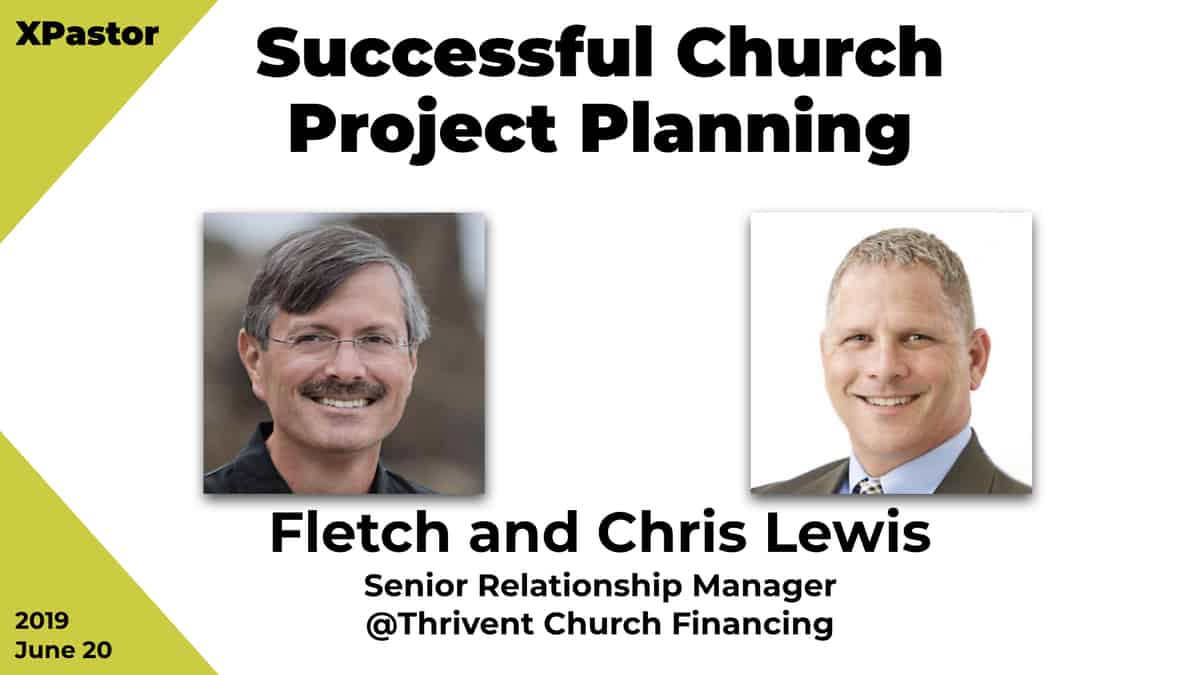When it comes to managing facilities expansion in most dynamic churches, many people think first of building a brand new facility. But in today’s changing world, there are good reasons a church should seriously explore purchasing and renovating an existing building to meet their expansion needs. This article presents ten reasons to consider an existing building, with financing implications for each reason.
1. Available Properties
In many major cities, there has been a downturn in the real estate market for retail, office, and commercial properties. Large buildings with tens of thousands and even hundreds of thousands of square feet are sitting empty across America. Many of these empty properties have attractive exteriors, ample square footage, tall enough ceilings for sanctuaries and gymnasiums, plenty of parking, and are located on major roads.
Financing Implications
With a greater variety of properties available, you need to be aware of the possibility of managing tenants and some of the benefits and problems that may arise with this responsibility. While the rents received can help your church qualify for a larger loan, they may also require you to pay income and property taxes that you’re not ususally required to pay. Your leadership team should definitely consider engaging an experienced attorney and/or CPA to guide you through the implications of managing rental income.
2. Affordable Costs
Across the country, the price for new construction has been escalating beyond the reach of many churches. On the other hand, the price of many existing properties has come down. For example, one growing church purchased a bankrupt racquetball club for $500,000 that was listed for $2.2 million. Another church purchased a 50,000 square-foot school with a 600-person auditorium for $600,000. A church in Maryland paid $1 million for a closed high school facility that only five years earlier had undergone $10 million in renovations. And in Chicago, a former international corporate headquarters on 80 acres with a 280,000 square-foot building and a 900-car parking garage that was valued at $53 million was given to a church for free!
Financing Implications
Whether a property is purchased or donated, most lenders will require that you provide detailed plans describing how a property will be converted into a church. If these changes require the use of cash, you will need to have those funds on hand prior to the loan being funded. This might mean that you’ll need to do a project in stages or phases. In today’s world, phasing a project might limit the number of interested lenders. Engaging a design/build team, or at least an architect experienced in similar renovation projects, is a must to satisfy the requirements of potential lenders.
3. Quicker Occupancy
It normally takes three to seven years to go from purchasing land to having your first worship service in a brand new (already outgrown) multipurpose facility. The time needed to develop drawings, line up funding, work with city government, put in your infrastructure, and construct the first building will take multiple years and will frequently encounter delays, loss of momentum, senior staff turnover, and cost overruns. Existing facilities, on the other hand, can often be renovated within 12 months (and sometimes less) from the date of purchase.
Financing Implications
Most ministries benefit from the stable costs and shorter completion times that are typical when purchasing and renovating an existing facility. Engage your lender early in the process so they can disclose any requirements they’ll have for the new facility. Another key consideration is that the final loan size will be determined as a percentage of the post-renovation property value. It’s important that you manage the project costs so you don’t “over build” the facility beyond what your lender will advance.
4. Less Government Hassles
A growing church in a major city worked directly with the city government to choose an existing property for their future church home. The church staff scheduled a meeting with the city planning department to discuss existing properties and available land that they were interested in pursuing. After the city looked over the church’s desired locations, they said they would fight the church on five of the properties they had in mind. But they also said that if the church pursued buying the bankrupt racquetball club, they would grease the skids and quickly approve the facility for use as a church. Guess which property the church pursued and ultimately occupied with the city’s blessing?
Financing Implications
Zoning and other city/county compliance issues can complicate a renovation project. Consider engaging a local expert as you talk directly with the decision-making organizations involved. You and your team should fully understand the cost and timing implications of any municipality requirements before approaching potential lenders.
5. Less Neighborhood Opposition
If you want to begin a controversy in a community, try to buy a large piece of property, then let the neighbors know you’re going to build a church that will attract hundreds or thousands of people, clog the roads and occupy the open land where they like to take their dogs for a walk! Across America today, communities are rising up against new super-sized buildings—whether big box stores, corporations, or churches. One California church had a multi-year battle with the city and neighbors, and ultimately was only allowed to build on 25 acres of the 126 they had purchased. When you purchase an existing property, the building is already a regular part of the community’s landscape.
Financing Implications
Transforming a large property, whether developed or not, into a church or ministry will usually require discussions with the local community. These discussions can include multiple public hearings and requests to revise building plans. These revisions can lead to requirements from the municipality for surety bonds to provide back-up funding for the changes. These bonds can easily range from $500,000 to more than $1,000,000. A church or ministry does not typically have the credit history required to obtain these bonds. Consequently, they will need some sort of security, such as the cash being raised for the project or a letter of credit from their financial institution. The need to then raise additional cash can become another hurdle that must be cleared.
6. Ready-Made Parking Lots
One of the greatest needs for growing churches is ample parking. Existing big box facilities or commercial buildings often have hundreds of parking spaces on their existing property. In many cases, there is additional parking at nearby businesses that can be used with special permission, since these businesses often don’t need parking spaces on weekends.
Financing Implications
In some cases, such as when a church is purchasing a retail strip center, each tenant has the rights to parking, and the church might need to obtain a reciprocal use agreement from these tenants. This could be true when parking is a shared space for a group of buildings, which is often the case with commercial campus sites. Most lenders will want to see a copy of these agreements as part of the loan approval process.
7. High Visibility Location
In real estate, the mantra is “location, location, location.” Many large facilities are sitting in prime locations with high visibility. When your church moves to one of these locations, it becomes highly visible to the whole community. One church purchased an empty big box sporting goods store in a prime location. Within a year, their attendance jumped from 1,200 people to over 3,000. A church in Florida purchased over 400,000 square feet of retail and commercial property that included a mall, movie theaters, bowling alleys, and restaurants, and turned it into a seven-day-a-week ministry and economic center in their community.
Financing Implications
Most lenders are not in the business of just making ministry loans, so it’s always helpful to include information that accurately reflects the visibility of the location and its potential impact on your ministry, with time frames for the impact. You should strive to make these projections as realistic as possible.
8. Keep Your Growth Momentum Going
Nothing kills the growth of a church quicker than running out of facilities or parking spaces. If church leaders do not strategically address the need for expanded space in a timely fashion, momentum can be lost forever as the church bogs down with inadequate facilities. By seriously researching all available buildings within a one- to five-mile radius (or satellite venues further away) you may find a God-given solution for your expansion needs.
Financing Implications
A growing church should be thinking and talking regularly with their lender about future ministry needs and exploring how their lender can support those needs. Then, when the church needs to request additional financing, they understand the necessary timing and how to position themselves as a desirable borrower.
9. Easier Design Decisions
When you start your design process with a blank piece of paper and empty acres of land that will be occupied in three to seven years, design decisions are difficult. But when you are going to occupy an existing building within 12 months, design decisions flow more quickly because you are concentrating on the best use of the specific available space. For example, one church that purchased a franchise pizza restaurant didn’t have to debate where the stage or the kitchen or the children’s play area would be. All they had to concentrate on was the fix-up, painting, carpet and chair colors … and what to do with the life-size mice and animals that were on the stage!
Financing Implications
Converting a space from one use to another can be complicated. Requesting a zoning change, for example, introduces a new level of complexity. Certain complications are unavoidable whether you’re considering new construction or renovation of an existing site. If you can find a building that closely matches the intended use, this complexity can be greatly reduced. For example, a church should start by looking for a vacant church, and a school should start by looking for a school.
10. Easier to Sell the Vision and Raise the Funds
No matter how hard you try, some people will never be able to “see” what the church will look like if you stand them out in the middle of a cornfield on the edge of town. But when you can have them drive up to the existing building and walk around it, they quickly and easily catch the vision and see the value of what their gifts and pledges will help accomplish. In Texas, a church purchased a beautiful newly-built Cadillac car dealership that had gone bankrupt. The congregation was blown away when they could walk in and see this beautiful new facility that was available to them at a fraction of what it would cost to build.
Financing Implications
Ministry leaders should look for ways to share vision and plans with their members and banking partners. The better people understand what the future looks like, the more opportunity they’ll have to support the change and become engaged in its success.
Lenders are used to looking at traditional business plans as a means of understanding a project. Ministries should strive to prepare information in a way that helps their lender understand both the scope of the project and details of the operational changes that will take place when the project is started and after it’s completed.
I trust this article helped stretch your thinking and stretch your faith. I have opportunities to travel and preach around the country, and whenever I visit a city, I look for large commercial facilities that are sitting empty so I can pray that God will use some of these facilities for His divine purpose. Proverbs 13:22 says the “wealth of the sinner is stored up for the righteous.” I personally believe there are companies that have built wonderful facilities in prime locations that are now sitting empty because God has destined these facilities to be used by community-shaping and life-impacting churches. Maybe one of the buildings I have prayed for will be the God-given building for your needed expansion plans.
Follow-up Action Items
Research the following for-sale or rental properties in your community:
- Church buildings
- Grade schools
- Middle schools
- High schools
- Movie theaters
- Large restaurants
- Shopping malls
- Big box stores
- Corporate offices
- Manufacturing plants
- Car dealerships
Top Four Things Needed for an Ideal Property
- Highly visible and accessible location
- Ceilings of 18’ or higher for sanctuary and/or gym space
- Hundreds of existing, potential, or surrounding parking spaces
- Sale price is 25 to 90 percent below what it would cost to build today










